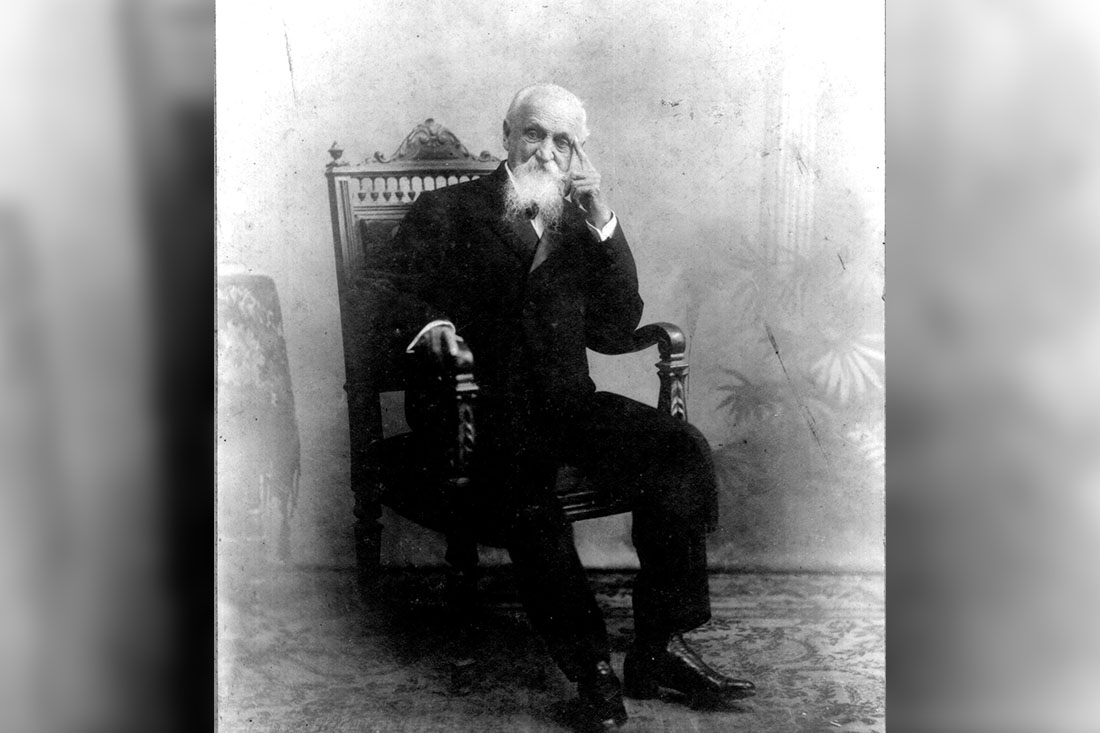Total consternation was the halo that crowned the night of February 28th, 1914 before the departure of one of the most representative figures of Cuban and Latin American democratic thought: Salvador Cisneros Betancourt. The people of the capital crowded into the mortuary house, Neptuno 208, then accompanied the coffin to the Senate of the Republic, there his chair was dressed in mourning in the absence of the man that used it with dignity and would not sit down again.
The Presidential Palace was also part of the pilgrimage led by the hero’s widow: Mrs. Dalia Martínez de Cisneros and the heads of the political parties at the time: The Liberal Party and the Conservative Party, the latter made the honor guard. The mournful float: Santa Lucía, baptized in his honor, led the inert body to the Train Station where it would arrive at his hometown. The funeral train was an expression of admiration, respect, affection and pain.
The month of February was for the life of Cisneros a month of concurrences, in addition to his birth. On February 26th, 1869 he was appointed President of the Assembly of Representatives of the Center. On February 24th, 1995, he again launched himself into the Revolution together with the advance party of Camagüey. At the beginning of the so-called Republic, in 1903, the Estrada Palma government signed an agreement with the United States through which it leased areas of land and waters of Guantánamo and Bahía Honda for naval and coal bases, Cisneros struck blows on the table said: …He’s a wimp. When that shit gets to the Senate they’re going to hear me… Why are we fighting? To be free or to remain slaves?…
His life, as a man close to the people, throbbed with him and crystallized with noble ideals.
Mortal: do no let any title to astonish you. Dust you are, like every other man
That is the epitaph of the simple tombstone of the Marquises of Santa Lucía in the General Cemetery of Camagüey, located in the first section, vault 83. The wisdom of the proverb justified his life and the massive farewell of all of Cuba. The country was in national mourning, the funeral honors corresponded to those of the President of the Republic, the armed forces extended the mourning to fifteen days with the flag at half-staff on state buildings, ships, fortresses and others.
The mournful cart pulled by horses driven by the armed forces received the coffin at the Camagüey Station, on a pilgrimage it went through República Street, in Soledad Square the funeral procession went through Estrada Palma Street (today Ignacio Agramonte) to the Mayor (today Cisneros) and all the people of Camagüey paraded before his inert body in the City Hall session room converted into a Funeral Chapel since March 2nd, the day the mortal remains of the Great Citizen arrived.
A mourning ribbon was placed on the doors of each home as a sign of sorrow. The funeral procession was also a sign of respect for his memory, when leaving for the Cemetery it kept the following order: First the armed forces, then relatives, the national and local civil power, the veterans of the independence wars, the press, the different black and white educational and recreational societies, followed by the labor unions, the children’s band and lastly the hearses and wreaths.
The song of life, the psalm of hope, the anthem of triumph
Already at the funeral, the military honors moved those present, then, Senator Manuel Sanguily pronounced the Funeral Oration, he noted:
From the grave that will soon be closed, the heartrending notes of the miserere do not spring; but the song of life, the psalm of hope, the hymn of triumph.
The body wrapped in the Cuban flag was mourned by brave men, war veterans, children, widows, women of his people… in short, the melancholy of the clouds that covered the homeland.
Bibliography
Muñoz, Ricardo y Cento, Elda (2002) Salvador Cisneros Betancourt: Palabras contra la Enmienda Platt, Editorial Ácana, Camagüey; Cuba.
La discusión Newspaper, 1914.
Translated by: Aileen Álvarez García






